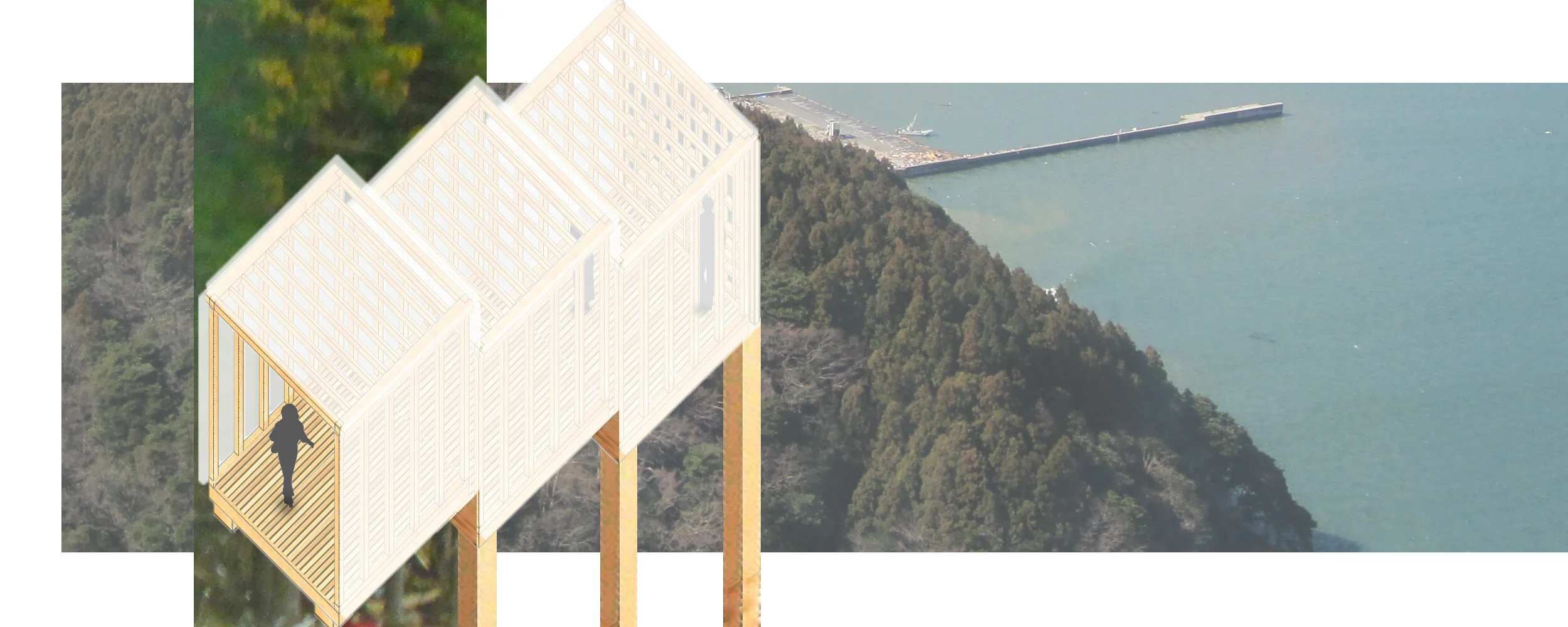
Horaikan Trail
Re-assessing tsunami escape routes.
“I was given a brief to create tsunami escape routes on the coast of Kamaishi, Japan, and to co-design with the local community. The intention was to remove the morbid associations and to create a nature trail with respect to the memory of those that lost their lives. This project spanned over a year and was developed between myself and three other designers as a concept for the community to produce. This project was supported by Chelsea College of Art and Future Lab Tohoku.
We worked on site and with the community to develop the designs and to respond to the location. The location was Kamaishi, Japan.” - Madelaine Dowd
(2015)



Concept visual of View point 1 on Horaikan Trail.
The design was created with the local impact in mind. The size of the structures were designed to have minimal impact on the site, as well as blending in with the natural environment. The material components were locally sourced. The structure was designed to be erected by the local craftsmen, and to be a monument of community as well as a safe place to provide resilience.
“This project started my passion for designing resilience solutions for disasters. There were tensions felt between the design objective and the locals needs. This tension is something that I carry with me on my projects and is discussed further in When Disaster Strikes.” - Madelaine Dowd



